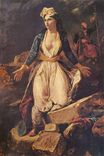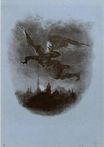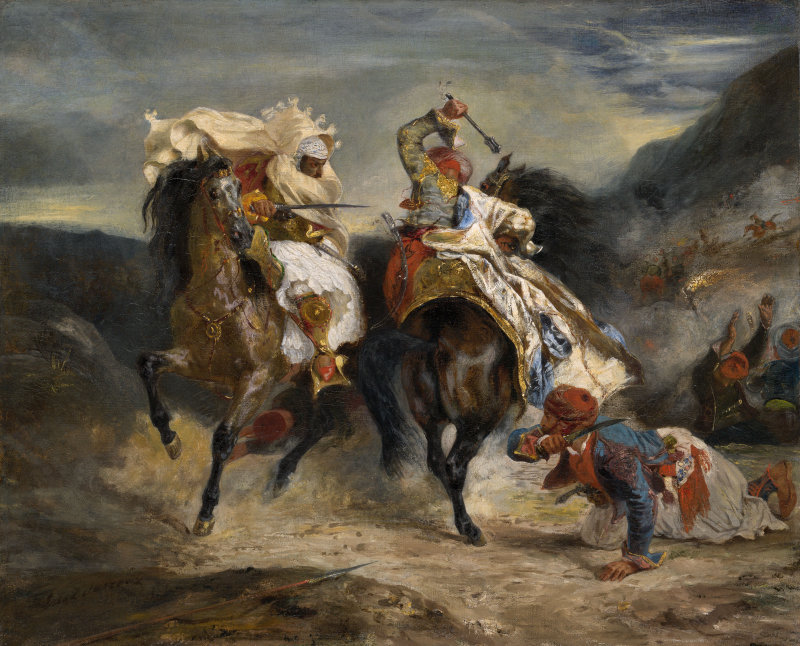Eugène Delacroix - Combat Between the Giaour and the Pasha 1826
 |
 |
 |
 |
 |
 |
 |

Combat Between the Giaour and the Pasha 1826
58x71cm oil/canvas
Art Institute of Chicago, United States
<< Previous G a l l e r y Next >>
From Art Institute of Chicago:
The Combat of the Giaour and Hassan is among Eugène Delacroix’s finest early representations of battle. The painting was inspired by "The Giaour," a lengthy poem by England’s most famous Romantic poet, Lord Byron. Written in 1813 and translated into French in 1824, the poem presents a subject and setting—passion avenged on an exotic battlefield in Greece—that perfectly suited the artist’s Romantic imagination. The painting depicts the poem’s dramatic climax, when the Venetian giaour (a Christian infidel), his eyes bloodshot, avenges his lover’s death at the hands of a Turk called Hassan. Weapons poised, the two enemies face off in mirroring poses: the giaour in swirling white, and Hassan with his face hidden. With its exotic costumes, intense drama, and forceful colors and forms, this painting is the most revered of the six known versions Delacroix made based on Byron’s poem. Begun in 1824, the year Byron died in the struggle for Greek independence from the Turks, Delacroix finished the painting two years later, just in time for it to be included in a Parisian exhibition benefiting the popular Greek cause.
— Entry, Essential Guide, 2009, p. 208.